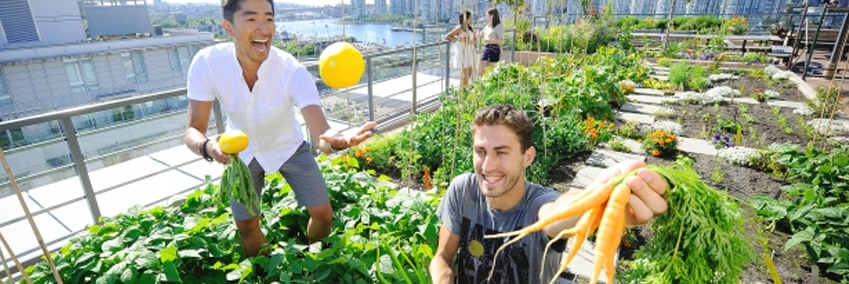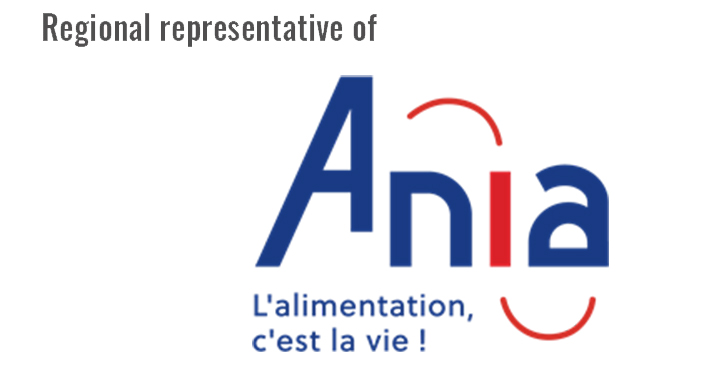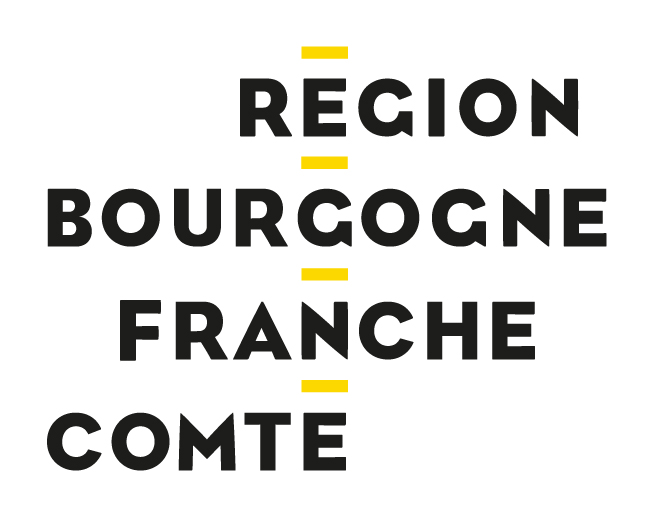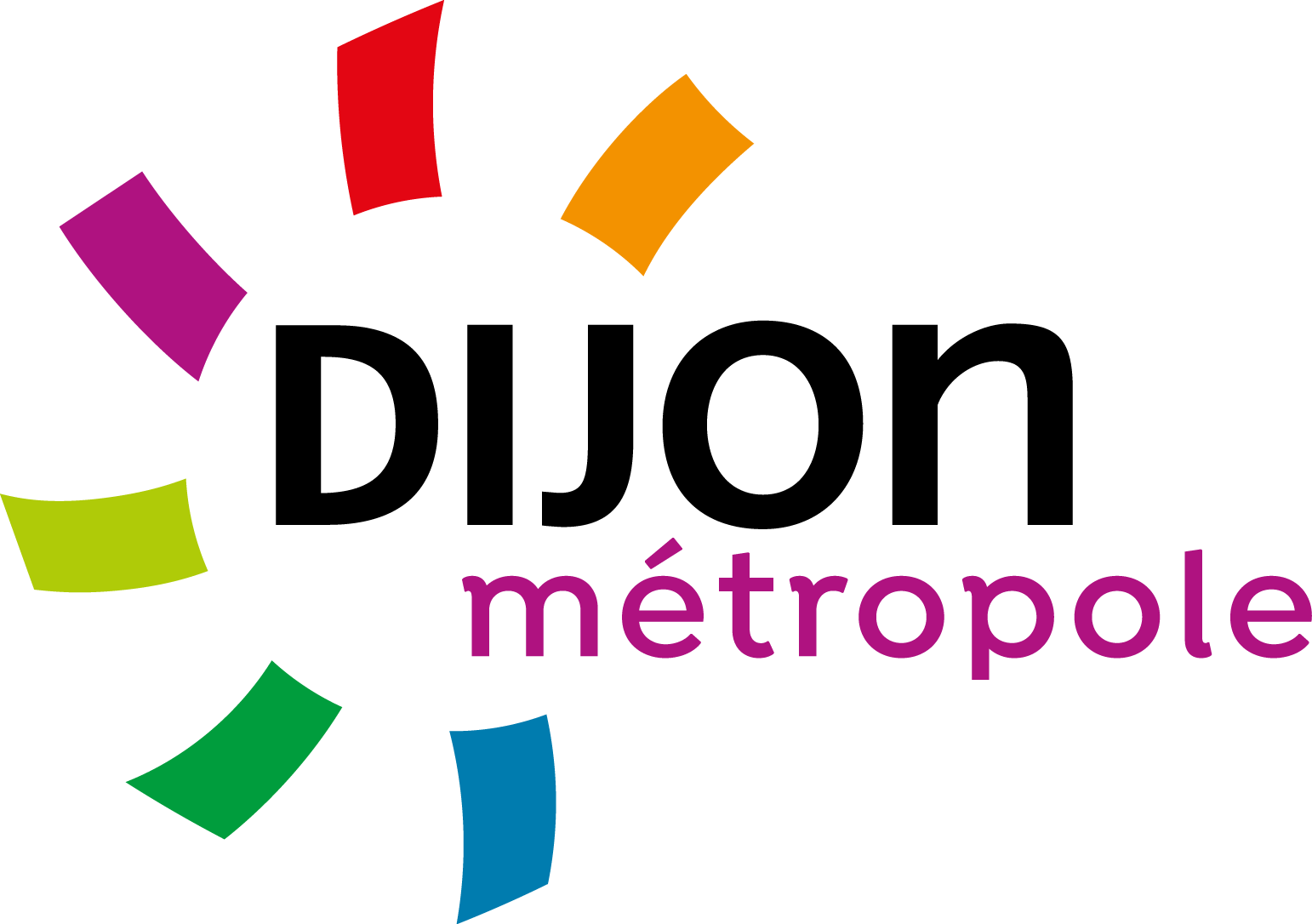13 Oct 2021
The various realities, and opportunities, of urban agriculture in France

Whether from a growing awareness of the environmental impact of food production, or the travel restrictions of the Covid-19 pandemic that encouraged the consumption of locally grown foods, or even the various food industry scandals that are corroding trust... French consumers are looking to retake control of their food with a focus on local and minimally-processed products.
As a well-spring of development for a territory, urban agriculture proffers an answer to consumers' quests for proximity and connection with their food chain. What are the realities beneath the umbrella term of urban agriculture? And what opportunities are there for food business?
The many realities of urban agriculture
While the notion of urban agriculture seems easy to define (growing food within a city limits), it is nonetheless subject to a number of incarnations according a various criteria: geographic location, the type of crops to be grown, the growing medium etc. To put all this in black and white, researchers from AgroPariTech identified 7 families of urban agriculture (you can read the full article in French on TheConversation.com):
- The "feet on the ground" family: like the ancesters of urban agriculture (gardens producing for the royal court, for example), this family exists in the form of small, semi-urban farms essentially for providing city residents with local ingredients grown in open ground according to traditional techniques. In France, examples of this are the AMAP associations or PermaG’Rennes...
- The "head in the clouds" family: these market gardens or animal farms (eggs or honey) are located on the rooftops of city buildings. Their goals can be to produce, to teach, or to provide leisure activities. Some examples are AgriPolis, the rooftops of AgroParisTech or RATP (Paris' public transport company)...
- The "vertical" family: these initiatives grow plants on green walls, for example for use in urban micro-breweries (hops). In Asia and the United States, the size of these installations can be impressive, as is the case for SkyGreens in Singapore FarmOne in New York. In France, several initiatives have emerged such as SousLesFraises, FermeFul, or indeed Vitagora members TowerFarm and Farm3.
- The "under cover" family: this is greenhouse growing within a city limits, whether in the soil (Skygreen) or indoors (Les Fermes Lufa, The New Farm).
- The "in the shade" family: this family uses dark spaces such as basements, disused carparks or containers, as used by the companies Agricool and Farmbox, and is of particular interest to high-density urban areas.
- The "Sunday best" family: these are private gardens and allotments (like PeasAndLove) either for a leisure activity or a communal project (see les Jardins Solidaires), and can also take the form of indoor installations (Ciel Mon Radis, UrbanLeaf, PrêtAPousser…)
- The "self-service" family: this family lays claim to a citizen-lead activist vision with the goal of converting concrete to plants for use by residents, as with Incroyables comestibles, ParisCulteurs, but also other city-led regreening initiatives such as the "gardening permit" of Paris.
Responding to consumer demands
The goal of urban agriculture is never to replace rural agriculture. Indeed, the production capacity of urban agriculture and the surface areas involved are very variable. It is estimated that the various allotments and urban and semi-urban edible growing in France to be between 2500 and 5000 hectares. While its current imprint and development potential is not easy to define, urban agriculture represents a signification opportunity to address a growing chorus of demands on the part of consumers:
- Local and traceable food: according to an OpinionWay survey in 2020, 45% of French people prioritised purchases of local food during the spring 2020 lockdown - and half of the French want "the world to change so that eating 100% local is possible". This interest is also illustrated by the growing sales of local brands, with smaller companies reaping the benefits.
- Fresh and high-quality produce: 79% of French consumers say they pay attention to the geographic origin of their food products or where they are manufactured - in particular for reasons of quality and traceability. Fresh foods are the most affected by the perception of "localness": vegetables (84%), fruit (83%) or even eggs (73%) and dairy products (67%) (source: Observatoire E.Leclerc des Nouvelles Consommations).
- Protection of the environment: 80% of French consumers want to "adopt a more responsible lifestyle" (OpinionWay, May 2020), and it is above all the environment that is the intended beneficiary (increase in sales of organic foods, reduced packaging, limiting one's individual environmental footprint). By reducing food miles, improving air quality thanks to increased plantations, or using less chemicals (such as for greenhouse farming), urban agriculture can make good on this promise - although this argument is frequently challenged due to the increased energy consumption of more "high tech" means of production.
- Social benefits: 60% of consumers consider that buying local contributes to jobs and the economy of their regions, and 95% consider that it is important for supermarkets to support the local economy (source: OpinionWay). Beyond a purely economic impact, creating jobs or growth, urban agriculture has a number of benefits: it can create social cohesion among residents (community gardens), it can promote social or economic reintegration for vulnerable populations or play an educational role for children and adults (sharing knowledge of plants, growing techniques and the seasonality of foods). From a development point of view, urban agriculture can also breathe new life into disused or abandoned zones, and contribute to a city's overall attractiveness.
While urban agriculture covers a number of realities, it can thus also represent opportunities - but also limitations - according to each "family" of growing techniques. For example, while semi-urban farms can provide prized local fresh produce, they are subject to the vagaries of climate and weather, and are unable to provide guarantees of uniform products throughout the year - unlike "under cover" or "in the dark" productions... which, themselves, are much more greedy in energy consumption.
A growing interest from investors and retailers
By providing complementary solutions to traditional agriculture that zero in on consumer demands, urban agriculture is currently attracting strong interest from investment funds and national supermarket chains. French start-ups are leading the pack: Agricool closed an investment round of 25 million euros in 2018.
On the side of retail, many players are taking notice of urban agriculture as a source of fresh and local produce. The Casino supermarket chain has equipped some of their supermarkets with herbs grown in greenhouses on their premices, developed with the German start-up Infarm. Metro, the restaurant wholesaler, also sells own-grown herbs. The start-up Urban Leaf, who was accelerated by our ToasterLAB program, has developed an aquaponics solution (meaning a synergy between plant growing and fish farming) in a virtually closed circuit, designed for use in supermarkets for growing their own fruit or vegetables (we have a blog article in French on that subject here).
Go further
During the World Expo in Milan in 2015, Christian Steinberg, a research director at the Agroecology research unit in Dijon, mentioned the various stakes of urban agriculture: "urban agriculture is an example of the diversification of agriculture, on the same level as organic farming, for example. Even if it is not yet able to provide large scale production, it has two major benefits, for society and the environment. On the one hand, it can provide a social dimension lacking in urban areas. On the other hand, it can transform disused zones into green spaces. And these spaces can both provide food and help to regulate the temperatures of cities, which is of considerable interest in the context of climate change."
To find out more about the challenges and benefits of urban agriculture, read our "Close-up of food trends" article. Or contact us to discover the various innovators and experts in our ecosystem: elodie.dasilva@vitagora.com
Finally, don't forget to subscribe to our blog so you don't miss any posts (around 2 to 3 emails per month)!




 Home
Home

















Share your opinion